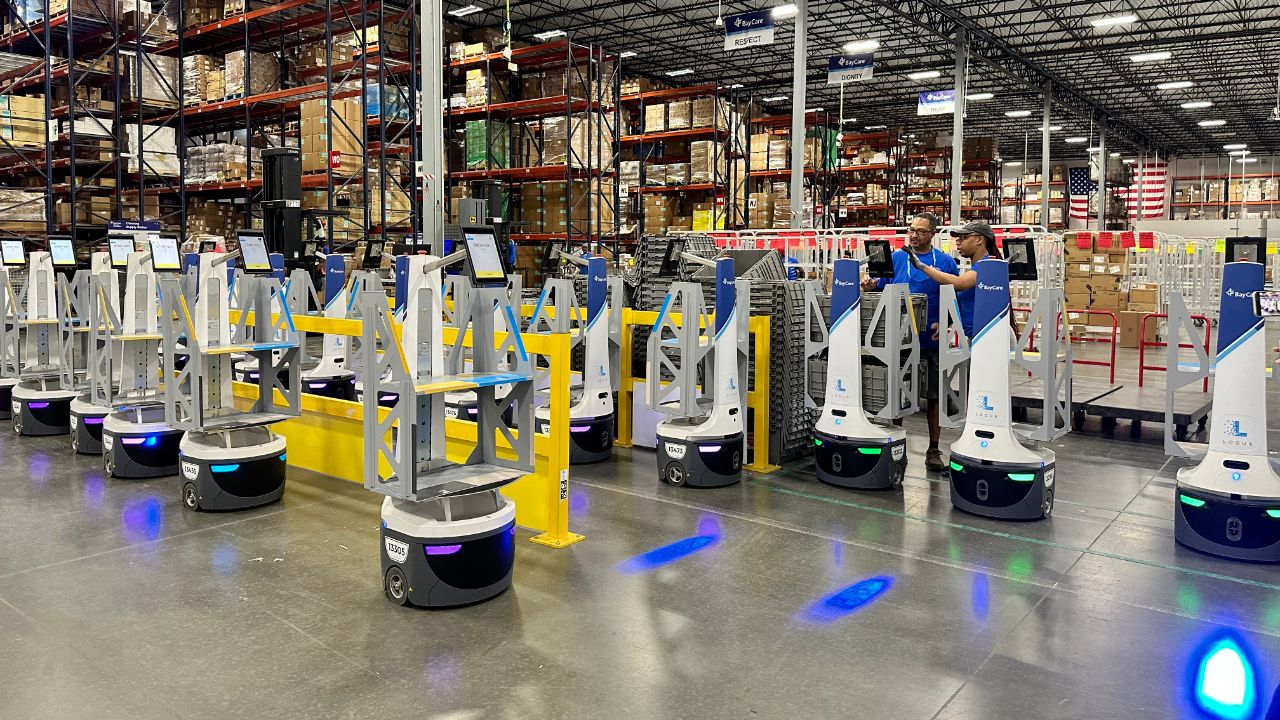Unleashing the Future: BayCare's Warehouse Transforms with the Use of Robotics
BayCare is introducing robotic technology to further improve its innovative supply distribution process.
At the BayCare Integrated Service Center (BISC) in Temple Terrace, 25 state-of-the-art robots now work to support BayCare team members, improving accuracy in filling orders, reducing physical demands for team members and, most importantly, supporting prompt and seamless care to the community.
“Being in supply chain with BayCare for almost 30 years, I was thrilled to have the ability to implement robotics. It’s almost something that you could only dream of,” said Victor Celiberti, BayCare’s supply chain director.
The robots are being deployed in the “pick module area,” at the BISC, a massive, 258,000-sq ft. distribution center that stocks everything BayCare needs to serve its patients, from IV tubing and bags of solution, to bedside pitchers and bedpans, to personal protective equipment, surgical kits and more. In the pick module, team members walk the aisles to assemble supplies for approximately 12,000 orders a day to support BayCare’s 16 hospitals and hundreds of locations, including doctor’s offices, laboratories, ambulatory surgical centers and more across West Central Florida. The unified distribution model, unique in the industry when it debuted in 2007, has been instrumental to BayCare’s ability to maximize purchasing efficiencies and managing supply pipelines, including during the COVID-19 pandemic.
Approximately 100 team members work around the clock at the BISC to ensure excellent customer service, quality, and quick turnaround as they manage the inventory, distribution and transportation of medical supplies.
Before the adoption of robotics at the distribution center, the order picking process involved team members pushing carts weighing nearly 300 pounds up and down each aisle, guided by voice technology through headsets. Software already assisted in making the team members’ routes for picking supplies as efficient as possible. Nonetheless, Celiberti explained, the heavy carts made the picking process physically taxing for team members, limiting speed.
Under the newly implemented process, gone are the days of team members pushing heavy carts across the warehouse.
Now, robots have replaced carts and software helps integrate them as a true partner to the picking team. Orders are assigned to individual robots and displayed on a touchscreen for the team member’s use. Mapping software builds the most efficient route for fulfilling each order and the robot travels to where the first item needs to be picked. A team member meets the robot, picks the item(s), places the item in the robot’s tote and uses the touchscreen to tell the robot to move to the next item’s location. Once an order is complete, the robot is dismissed to the docking area where team members prepare the fulfilled order for shipping to the ordering hospital or facility.
“It has made my job significantly easier now that we don’t have to make lengthy trips across the distribution center,” said Shanelle Bradley, a distribution tech at the BISC. Team members have expressed greater satisfaction with their roles as they can now focus more on order fulfillment rather than the physically demanding aspects of the previous process.
“The integration of robotics in our pick module area has been a game-changer for us,” added Celiberti. “We have seen a remarkable increase in productivity, which has helped offset some of the labor-related challenges we faced earlier. Our team members now feel more engaged and empowered in their roles.”
Since its formation in 2007, the BISC has always been committed to delivering excellence, and the integration of robotics has taken their commitment to the next level. The BISC moved to its current location in 2016.

